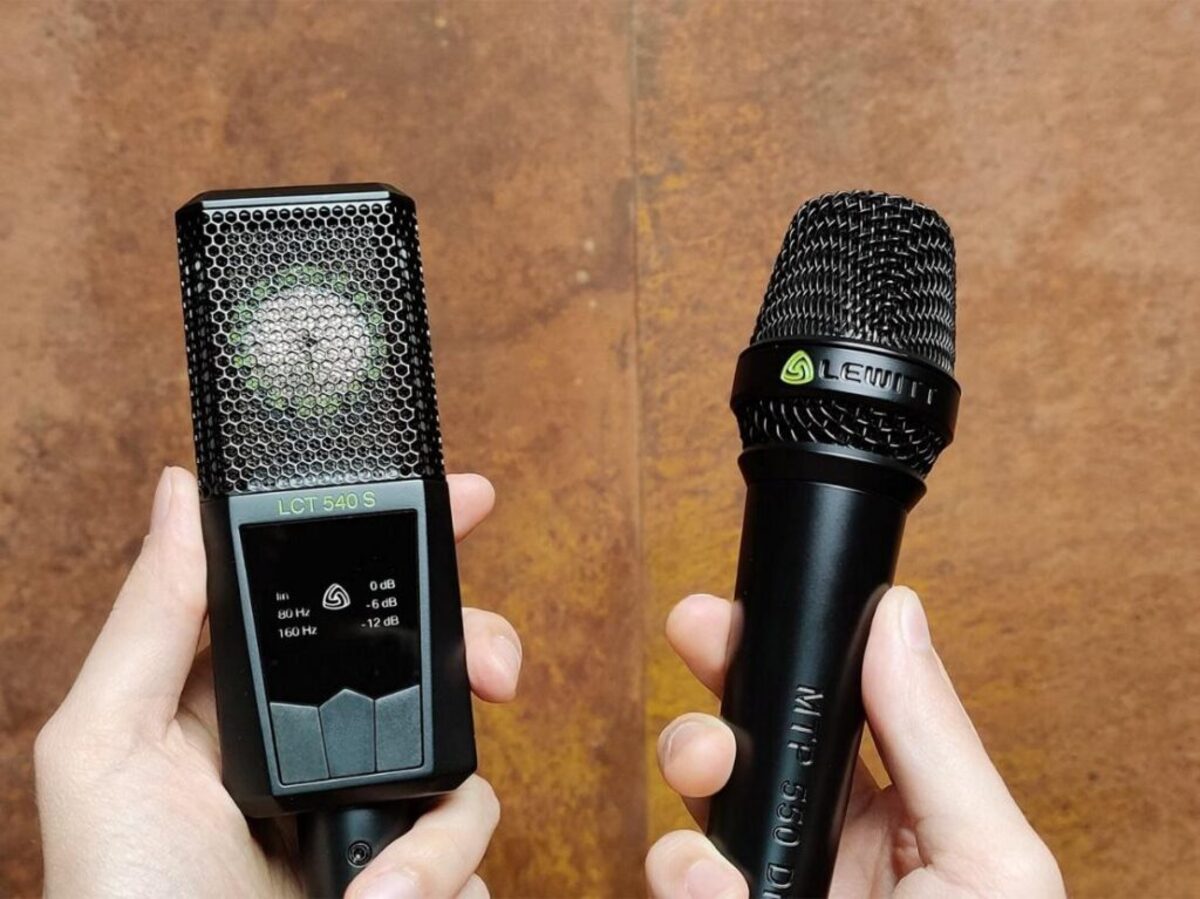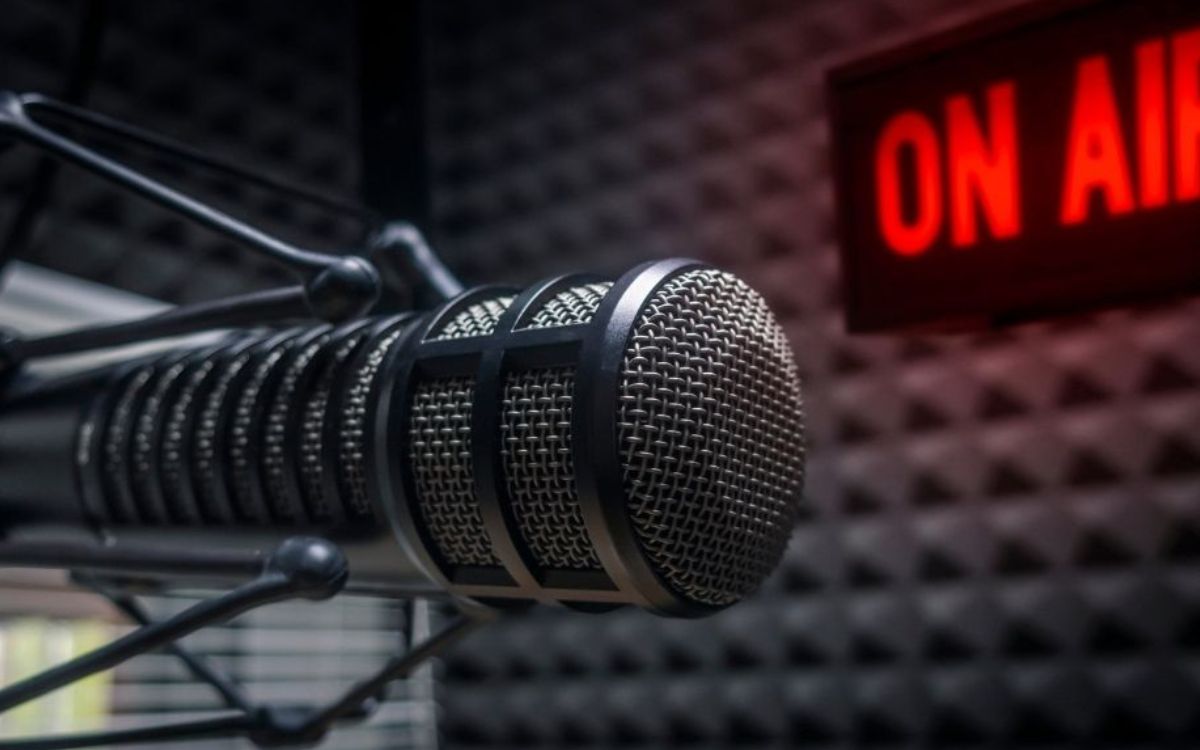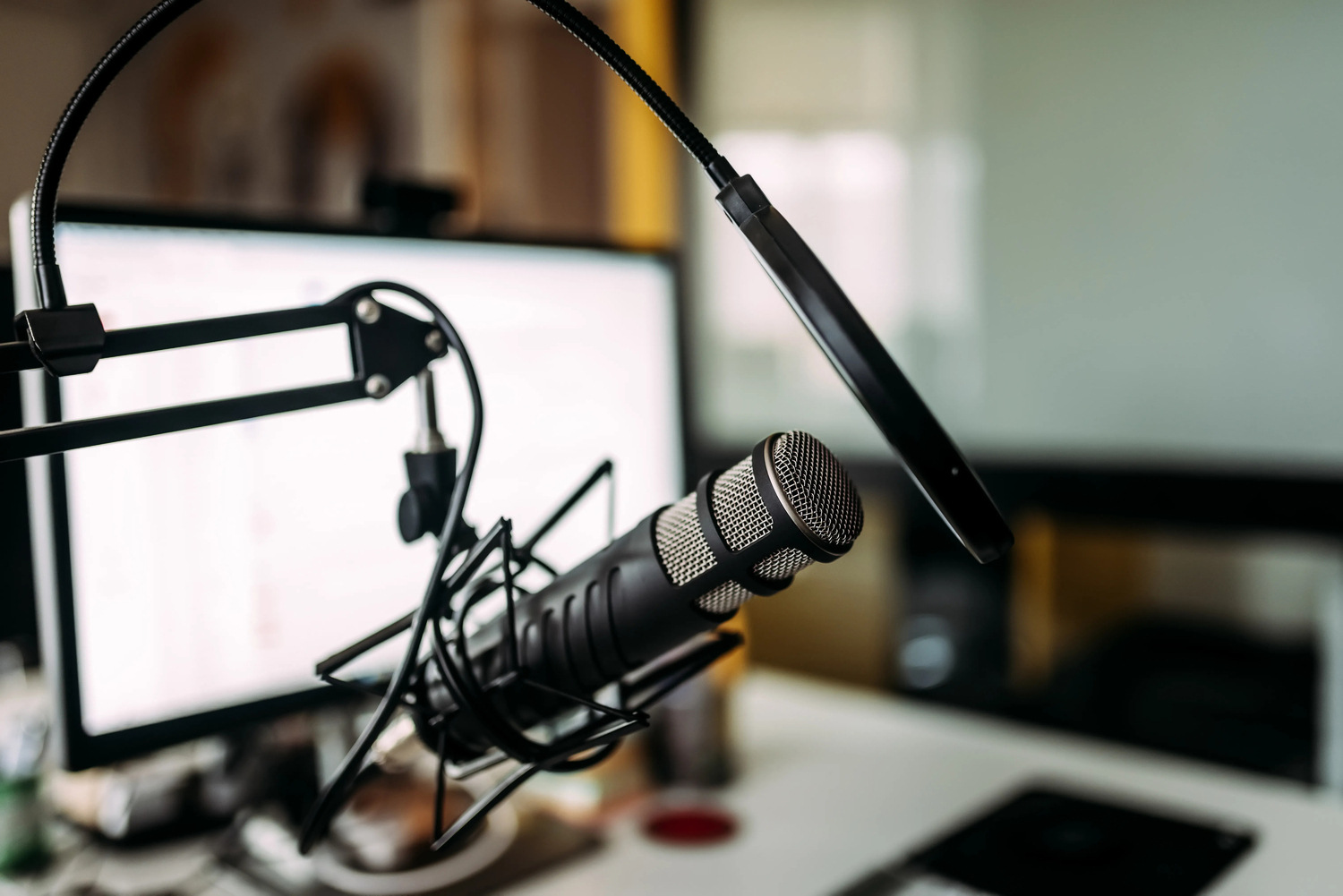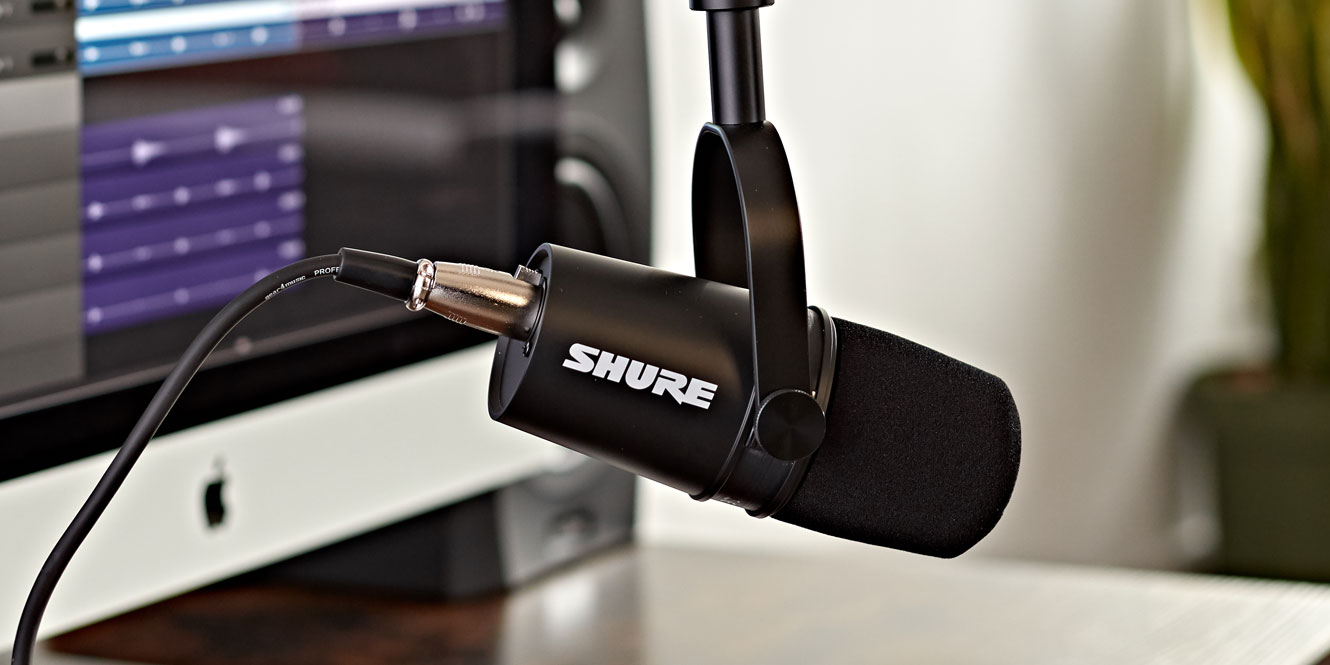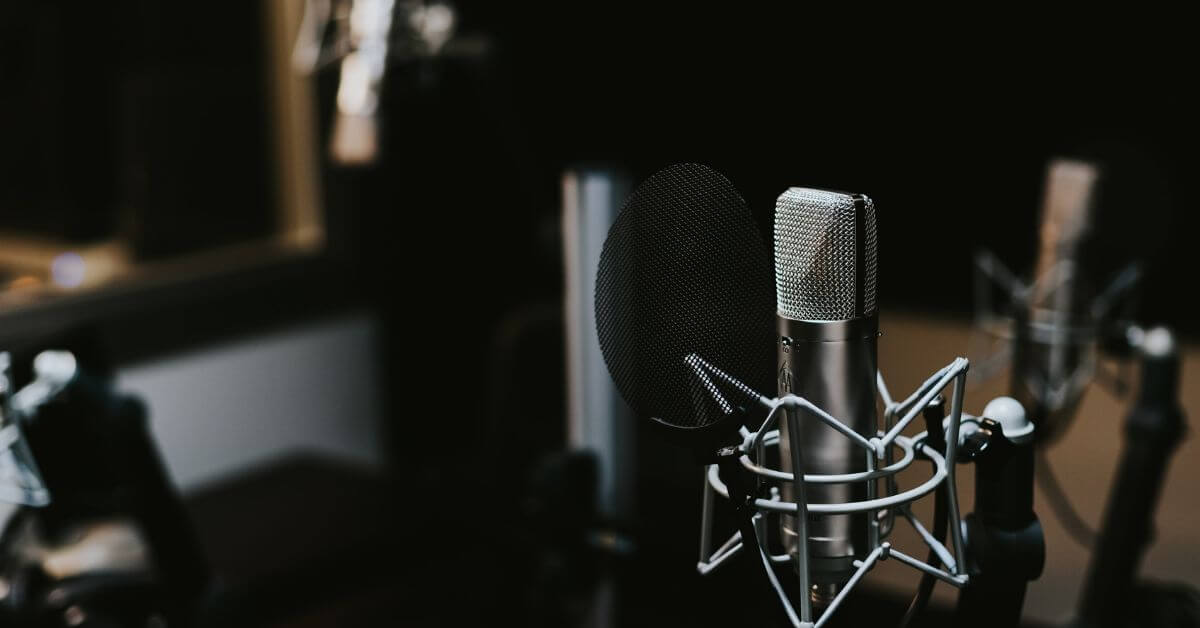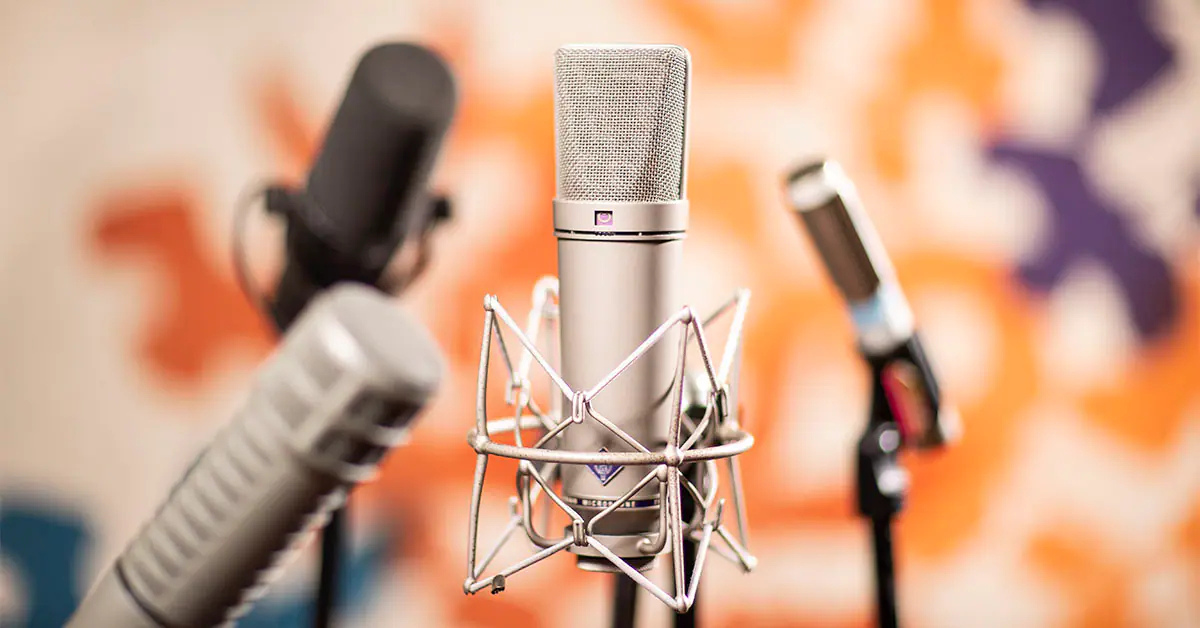Home>Production & Technology>Stereo>What Is Stereo Microphone
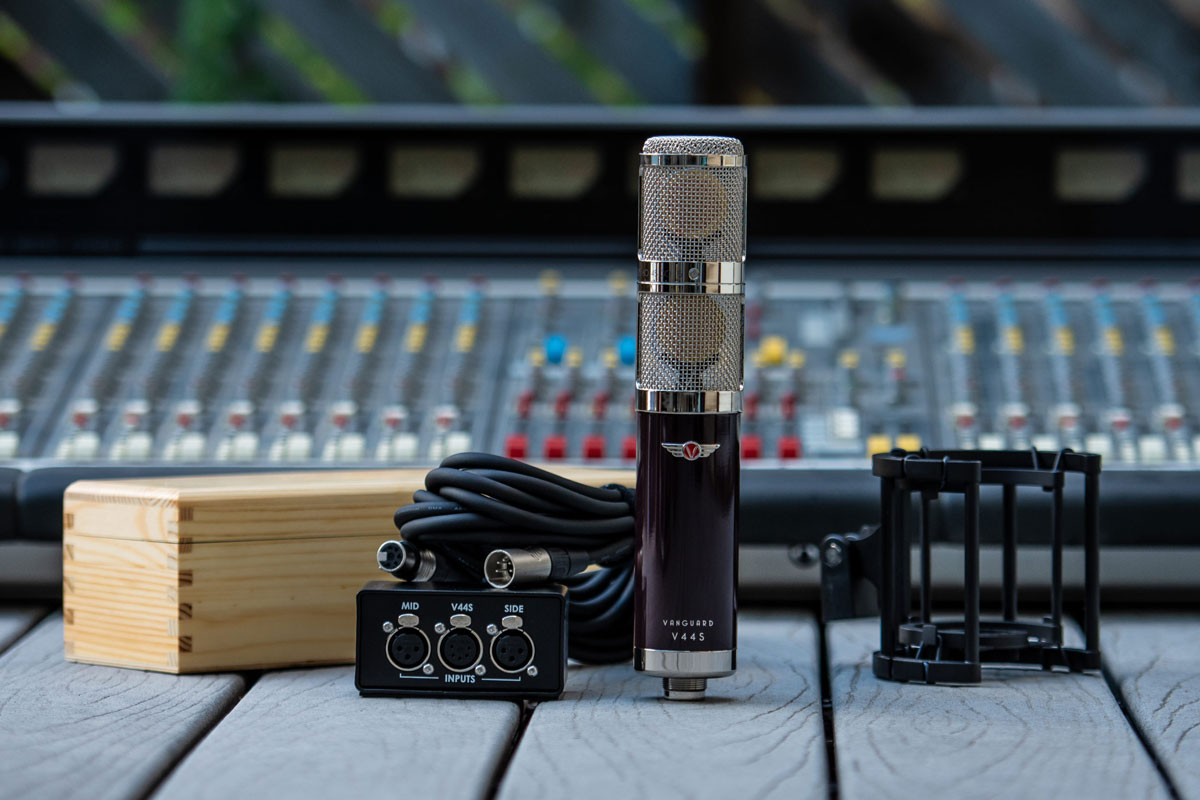

Stereo
What Is Stereo Microphone
Published: November 25, 2023
Learn what a stereo microphone is and how it captures high-quality audio with depth and dimension. Discover its uses in music recording, podcasting, and more.
(Many of the links in this article redirect to a specific reviewed product. Your purchase of these products through affiliate links helps to generate commission for AudioLover.com, at no extra cost. Learn more)
Table of Contents
Introduction
Stereo microphones play a crucial role in capturing high-quality audio in a wide range of applications. Whether you are a musician, podcaster, filmmaker, or content creator, understanding the fundamentals of stereo microphones is essential for achieving immersive and realistic sound recordings.
Unlike monaural (mono) microphones that capture sound in a single channel, stereo microphones utilize two or more microphone elements to capture audio in a way that replicates the natural hearing experience. This allows for the recording of a sense of depth, spaciousness, and accurate localization of sound sources.
In this article, we will delve into the world of stereo microphones, exploring their functionality, various types, popular applications, and factors to consider when choosing one. We’ll also discuss the advantages and limitations that come with using stereo microphones, along with tips for maintenance and care.
Whether you’re looking to record music, film audio, podcasts, or other forms of content, gaining a thorough understanding of stereo microphones will help you make informed decisions for achieving exceptional audio quality.
Overview of Stereo Microphones
Stereo microphones are designed to capture audio in a way that replicates the natural hearing experience. They utilize two or more microphone elements to capture sound from different directions, allowing for a more immersive and realistic sound reproduction.
One of the key features of stereo microphones is their ability to capture the spatial aspects of sound. By using two separate microphone capsules, stereo microphones can create a sense of depth, width, and localization of sound sources. This makes them ideal for recording music, capturing ambiance in film audio, and creating audio for virtual reality and gaming applications.
There are different stereo microphone techniques that utilize various placement and configuration of the microphone capsules. The most common techniques include XY stereo, AB stereo, ORTF stereo, and MS stereo. Each technique has its advantages and characteristics, offering different sonic perspectives and capturing capabilities.
XY stereo uses two closely spaced microphone capsules positioned at a 90-degree angle. This technique provides a well-defined stereo image with excellent center-channel focus, making it suitable for recording instruments and vocals. AB stereo, on the other hand, involves placing two widely spaced omnidirectional capsules to achieve a wider stereo image and a larger sense of ambiance.
ORTF stereo employs two cardioid microphones spaced at a specific distance and angle, creating a precise stereo image similar to what the human ears hear. It offers a natural-sounding stereo field and is commonly used for orchestral recordings and capturing live performances.
MS (Mid-Side) stereo combines a cardioid microphone for capturing the center audio (mid) and a figure-eight microphone for capturing side information. MS stereo allows for control over the stereo width during post-production, making it a popular technique for film sound recording and broadcast applications.
Overall, stereo microphones provide a versatile and effective solution for capturing realistic and immersive sound. With the ability to replicate the human hearing experience, stereo microphones are a valuable tool for any audio recording or production endeavor.
How Stereo Microphones Work
Stereo microphones operate on the principle of capturing audio from different directions to replicate the natural hearing experience. They use two or more microphone elements, known as capsules, to capture sound waves and convert them into electrical signals.
Each microphone capsule in a stereo microphone is responsible for capturing sound from a specific direction. The capsules can be configured in different ways depending on the desired stereo recording technique. The most common configurations are XY, AB, ORTF, and MS, as discussed in the previous section.
When sound waves enter the stereo microphone, they reach the individual capsules. Each capsule generates an electrical signal proportionate to the air pressure caused by the sound wave. These electrical signals are then combined, processed, and sent to the audio recording device or mixer.
The positioning of the capsules and their sensitivity patterns determine the nature of the stereo recording. In an XY stereo configuration, the capsules are typically positioned side-by-side or one above the other, with their directional patterns crossed at a specific angle. This captures a focused stereo image with a well-defined center-channel presence.
In AB stereo, the capsules are widely spaced apart, capturing a wider stereo image and more ambient sound. This configuration is particularly suitable for capturing the ambiance of a live performance or the natural acoustics of a room.
ORTF stereo employs a specific capsule spacing and angle to create an accurate stereo image that closely resembles the human hearing experience. It provides a natural sense of depth and width, making it popular for recording orchestras, choirs, and other ensemble performances.
MS stereo utilizes a cardioid capsule for capturing the center audio (mid) and a figure-eight capsule for capturing the side information. The two signals are combined during post-production to adjust the stereo width and create a dynamic and flexible stereo image.
Overall, stereo microphones rely on the strategic placement of multiple capsules to capture sound from different directions and create a stereo recording with depth, localization, and spatial accuracy. The choice of configuration and technique depends on the desired outcome and the specific recording scenario.
Types of Stereo Microphones
Stereo microphones come in various types, each offering different characteristics and recording capabilities. Understanding the different types can help you choose the most suitable microphone for your specific application. Here are some of the common types of stereo microphones:
- X/Y Stereo Microphones: X/Y stereo microphones feature two microphone capsules positioned on top of each other or at a 90-degree angle. This configuration creates a well-defined stereo image with a focused center-channel presence. X/Y stereo microphones are widely used for recording instruments, vocals, and other close-mic applications.
- Blumlein Stereo Microphones: The Blumlein stereo technique utilizes a pair of figure-eight (bidirectional) microphones crossed at a 90-degree angle. The capsules capture sound from the front and rear, resulting in a detailed stereo image with excellent spatial accuracy. Blumlein stereo microphones are often preferred for capturing natural and realistic stereo recordings.
- Mid-Side (M/S) Stereo Microphones: Mid-Side stereo microphones consist of two capsules, one cardioid (mid) and one figure-eight (side), arranged in a vertical configuration. The mid capsule captures the center audio while the side capsule captures the stereo width. The M/S technique allows for flexible stereo width adjustment during post-production, making it popular in film sound recording and broadcast applications.
- AB Stereo Microphones: AB stereo microphones use a pair of omnidirectional capsules spaced apart to create a wider stereo image and capture the ambient sound of the recording environment. AB stereo microphones are great for capturing spacious and natural-sounding stereo recordings, especially in large concert halls, choirs, and orchestral recordings.
- ORTF Stereo Microphones: ORTF stereo microphones feature two cardioid capsules spaced at a specific distance (17 cm) and angle (110 degrees). This configuration closely resembles the human ear’s sound localization and provides a natural and accurate stereo image with a wide soundstage. ORTF stereo microphones are commonly used for recording orchestras, choirs, and live performances.
Other types of stereo microphones include spaced pair microphones, binaural microphones, and coincident pair microphones. Each type offers its unique characteristics and advantages, suitable for different recording scenarios and applications.
When choosing a stereo microphone, it’s important to consider the specific recording requirements, desired sound characteristics, and the intended application. By understanding the different types of stereo microphones and their capabilities, you can make an informed decision and select the most suitable microphone for your audio recording needs.
Popular Applications of Stereo Microphones
Stereo microphones are widely used in various applications where capturing immersive and realistic sound is essential. They are versatile tools that find their place in professional audio recording, broadcasting, filmmaking, podcasting, and more. Here are some popular applications of stereo microphones:
- Music Recording: Stereo microphones are commonly used in music recording studios to capture instruments, vocals, and ensemble performances with spatial accuracy. Whether it’s recording a live band, a solo artist, or an orchestra, stereo microphones allow for capturing the width, depth, and natural ambiance of the sound source, resulting in rich and immersive recordings.
- Field Recording: Stereo microphones are essential for capturing environmental sounds and ambiance in field recording applications. From capturing the sounds of nature and wildlife to capturing urban soundscapes, stereo microphones excel at capturing the spatial dimensions and nuances of the surrounding environment, providing a realistic and immersive listening experience.
- Film and Video Production: Stereo microphones play a crucial role in capturing high-quality audio for film and video production. They are used to record dialogues, sound effects, and ambient sounds, adding depth and realism to the visuals. Whether it’s recording interviews, capturing foley sounds, or capturing immersive soundscapes, stereo microphones are indispensable tools in the world of filmmaking.
- Podcasting and Voiceovers: Stereo microphones are popular choices for podcasting and voiceover work. They provide a sense of dimension and presence to the recorded voice, making the content more engaging and immersive for listeners. Stereo microphones are used in studio-based podcasting setups as well as portable setups for on-the-go recording.
- Virtual Reality and Gaming: Stereo microphones are crucial in creating immersive audio experiences for virtual reality (VR) and gaming applications. They capture the three-dimensional sound and spatial cues required to replicate realistic audio environments, enhancing the sense of presence for the users. Stereo microphones are commonly used to capture 360-degree audio for VR experiences and provide directional audio for gaming.
These are just a few examples of how stereo microphones are applied in various fields. Their ability to capture immersive and realistic sound makes them invaluable tools for any professional or hobbyist involved in sound recording, production, or multimedia creation.
Factors to Consider when Choosing a Stereo Microphone
When selecting a stereo microphone, there are several important factors to consider to ensure you choose the right microphone for your specific needs. Here are some key factors to keep in mind:
- Purpose and Application: Consider the primary purpose of the microphone and the applications you intend to use it for. Are you recording music, film audio, podcasts, field recordings, or something else? Each application may have different requirements in terms of sound quality, stereo imaging, and flexibility.
- Microphone Technique: Decide on the stereo microphone technique that best suits your recording style and application. Different techniques like XY, AB, ORTF, and MS offer different sonic characteristics and capture capabilities. Choose the technique that aligns with your desired stereo image and sound reproduction.
- Recording Environment: Consider the acoustics of your recording environment. If you are recording in a controlled studio environment, you may have more flexibility in microphone choice. For outdoor or unpredictable environments, you may need a microphone that can handle high sound pressure levels and unwanted noise.
- Microphone Capsules: The type and quality of capsules used in a stereo microphone significantly impact the sound quality and performance. Look for high-quality capsules that offer accurate sound reproduction, low self-noise, and good sensitivity. Some microphones allow for interchangeable capsules, providing versatility for different recording scenarios.
- Build Quality and Durability: Consider the build quality and durability of the microphone. If you plan to use it in demanding conditions or for outdoor recordings, ensure that it is rugged and able to withstand the elements. Look for features like shock mounting and wind protection to minimize unwanted handling noise and wind interference.
- Budget: Determine your budget for a stereo microphone. Prices can vary greatly, so have a clear understanding of how much you are willing to spend. It’s important to balance your budget with your desired sound quality and features, keeping in mind that higher-priced microphones often offer better performance and durability.
- User Reviews and Recommendations: Research the experiences and recommendations of other users. Read reviews, watch demo videos, and seek opinions from trusted sources. This can provide valuable insight and help you make an informed decision based on real-world experiences.
By carefully considering these factors, you can select a stereo microphone that meets your specific requirements, ensuring excellent sound capture, and enhancing your overall recording experience.
Advantages and Limitations of Stereo Microphones
Stereo microphones offer several advantages and bring a sense of realism and immersion to audio recordings. However, they also have some limitations that are important to consider. Let’s explore the advantages and limitations of stereo microphones:
Advantages:
- Realistic Sound Reproduction: Stereo microphones capture sound from different directions, providing a more natural and immersive listening experience. They replicate the way our ears perceive sound, delivering a realistic stereo image with depth, width, and accurate placement of audio sources.
- Enhanced Spatial Imaging: By capturing sound from different angles, stereo microphones excel at creating a sense of space and localization. They allow for the accurate placement of instruments, vocals, and other sound sources, enhancing the depth and spatial imaging of recordings.
- Wide Soundstage: Stereo microphones capture a wider soundstage, creating a more expansive and enveloping listening experience. This is especially beneficial for musical recordings, film audio, and virtual reality (VR) applications, where a wide soundfield enhances the overall immersion.
- Flexibility in Post-Production: Stereo recordings offer flexibility in post-production. The captured stereo image can be adjusted, widened, or narrowed as needed during the mixing and editing process. This allows for fine-tuning and customization, adapting the stereo field to fit the desired sound aesthetic.
- Immersion in Virtual Reality and Gaming: Stereo microphones are essential for capturing immersive audio for virtual reality (VR) and gaming applications. They create the three-dimensional audio environment necessary to enhance the user’s sense of presence and immersion in the virtual world.
Limitations:
- Inherent Recording Angle: Stereo microphones have a fixed recording angle based on their capsule configuration. While this provides a natural sound perspective, it can limit some flexibility in capturing sound sources outside of the recorded angle. Additional microphones or different recording techniques may be required for broader coverage.
- Sensitivity to Phase Issues: Stereo microphones are susceptible to phase cancellation and interference if not positioned and calibrated correctly. Improper microphone placement or mismatched microphone capsules can lead to phase issues, resulting in a loss of stereo imaging and audio quality.
- Size and Portability: Stereo microphones can be larger and less portable compared to single-capsule microphones. Their size and weight may limit their mobility and convenience, especially for on-the-go recording or field applications where compactness and portability are crucial.
- Prone to Ambient Noise: Stereo microphones, especially those with wider pickup patterns, are more susceptible to capturing unwanted ambient noise and room reflections. Careful selection of the recording environment and consideration of acoustic treatment may be necessary to minimize unwanted noise and maximize the desired sound capture.
- Higher Cost: Stereo microphones, especially those with advanced capsule designs and technologies, can come with a higher price tag compared to mono microphones. The increased complexity and components involved in capturing stereo audio contribute to the higher cost.
Overall, stereo microphones offer numerous advantages in capturing realistic and immersive sound recordings. However, it’s essential to consider their limitations and address any potential challenges to achieve optimal audio quality and maximize their potential.
Maintenance and Care for Stereo Microphones
Maintaining and properly caring for your stereo microphone is crucial for ensuring optimal performance and longevity. Here are some maintenance and care tips to help you keep your stereo microphone in excellent condition:
- Keep it clean: Regularly clean your stereo microphone to prevent the buildup of dirt, dust, or debris. Use a soft, lint-free cloth or a brush to gently wipe down the microphone body and capsules. Avoid using harsh cleaning agents or solvents that could damage the microphone.
- Protect from physical damage: Handle your stereo microphone with care, avoiding any rough handling or accidental drops. Use a protective case or pouch to store and transport the microphone safely, protecting it from bumps, impacts, and dust when not in use.
- Protect from moisture: Keep your stereo microphone away from moisture and humidity, as excessive exposure to moisture can damage the electronics and capsules. If you’re using the microphone outdoors or in a humid environment, consider using a windscreen or a water-resistant cover to protect it from rain or moisture.
- Store in a controlled environment: Store your stereo microphone in a controlled environment, preferably in a dry and dust-free area. Extreme heat, cold, or fluctuations in temperature can affect the microphone’s performance, so it’s advisable to store it at room temperature.
- Avoid excessive wind and plosive pressure: Use a windscreen or pop filter when recording vocals or outdoor sound sources to prevent wind noise and plosive sounds from distorting the microphone’s diaphragm. This helps maintain clear and undistorted audio quality.
- Check cables and connectors: Regularly inspect the cables and connectors of your stereo microphone for any signs of damage or wear. Replace any faulty or damaged cables to ensure proper and reliable connection to your recording setup.
- Calibrate and position correctly: When using stereo microphones with adjustable configurations, make sure to calibrate and position them correctly to achieve accurate stereo imaging and sound localization. Consult the microphone’s user manual or guidelines for proper setup and adjustment.
- Service and maintenance: If you notice any issues with your stereo microphone, such as reduced sensitivity, noise, or distortion, consider contacting a professional technician or the manufacturer for servicing or maintenance. They can diagnose and fix any underlying problems to restore the microphone’s performance.
By following these maintenance and care tips, you can prolong the lifespan of your stereo microphone and ensure it continues to deliver high-quality audio recordings for years to come.
Conclusion
Stereo microphones are invaluable tools for capturing immersive and realistic sound recordings. With their ability to replicate the natural hearing experience, stereo microphones provide a sense of depth, width, and localization that enhances the overall listening experience for various applications.
We explored the overview of stereo microphones, including how they work and the different types and techniques available. Whether it’s XY, AB, ORTF, or MS stereo, each technique offers unique characteristics and advantages that cater to specific recording scenarios.
Stereo microphones find their applications in music recording, field recording, film production, podcasting, virtual reality, and gaming, among other areas. They allow for the capture of realistic soundscapes, enhancing the depth, spatial imaging, and overall immersion of audio content.
When choosing a stereo microphone, it’s important to consider factors such as the purpose and application, microphone technique, recording environment, microphone capsules, build quality, and budget. Making an informed decision based on these factors ensures that you select the most suitable microphone for your specific needs.
While stereo microphones offer numerous advantages in capturing realistic sound, they do come with some limitations. These include the fixed recording angle, sensitivity to phase issues, size and portability considerations, vulnerability to ambient noise, and higher cost compared to mono microphones.
Maintaining and caring for your stereo microphone is vital to preserve its performance and longevity. Regular cleaning, protection from physical damage and moisture, proper storage, and checking cables and connectors contribute to the microphone’s continued functionality and optimal audio quality.
In conclusion, stereo microphones are essential tools for anyone involved in audio recording, production, and content creation. By understanding their functionality, selecting the right microphone, and providing proper maintenance and care, you can capture exceptional sound recordings that truly immerse and captivate your audience.

